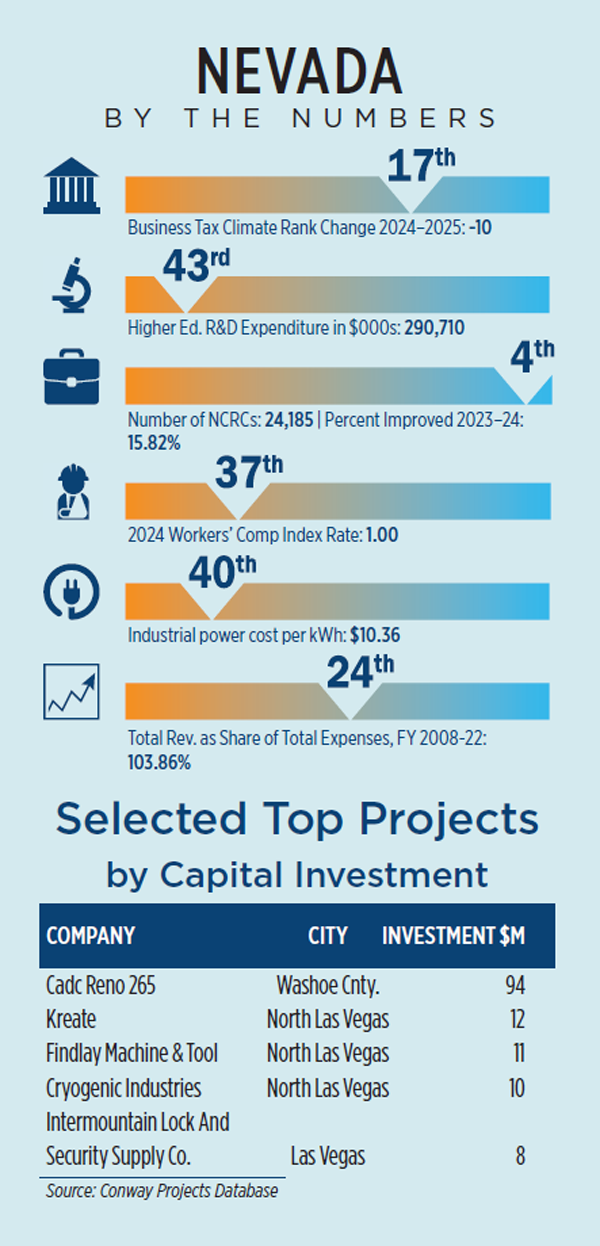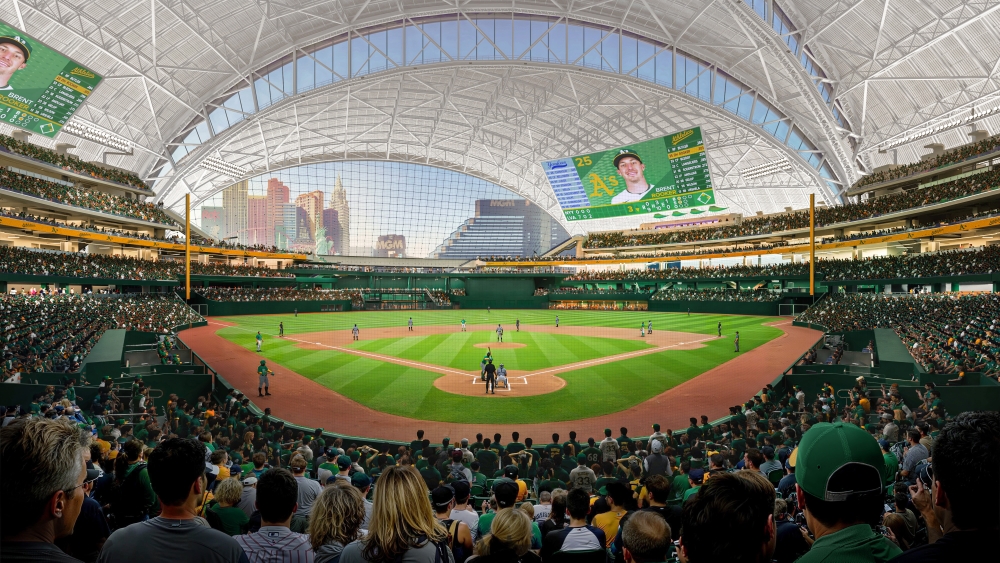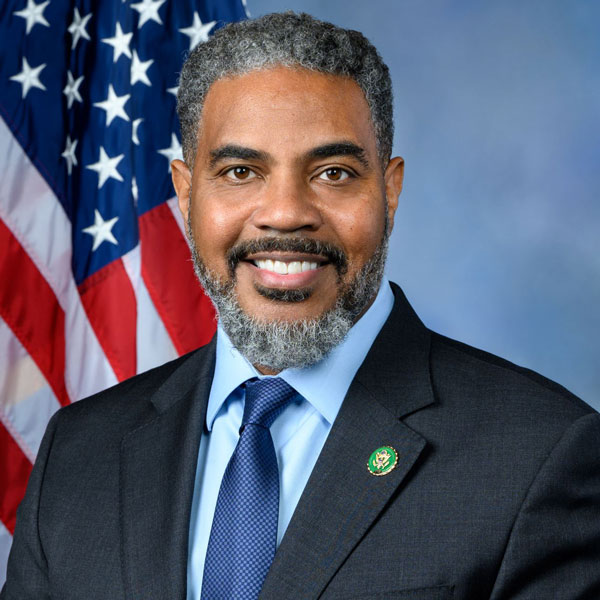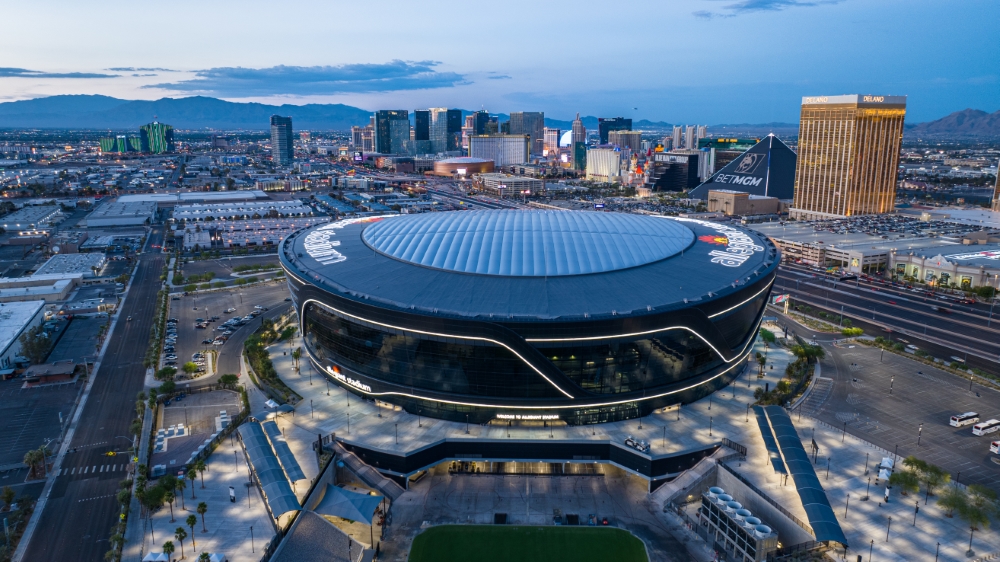When The Boyd Co. Location Consultants polled leaders at Fortune 1000 companies in the western U.S. in March for its 2025 Site Selection Leading Indicator Poll TM, they rated Nevada No. 1 among 11 western states when it comes to tax and business climate and No. 3 (behind Texas and Arizona) in terms of that business climate placing Nevada on a list of potential corporate relocation options.
Had the poll surveyed Forbes’ 2024 list of most valuable sports franchises in the world, Nevada certainly would have gotten a vote from No. 11 the Las Vegas Raiders, valued at $6.7 billion.
The man behind the Raiders’ move to Las Vegas and the completion of Allegiant Stadium (referred to by some as the “Death Star” because of its black exterior) was Marc Badain, former president of the Raiders. Today he serves as president of Major League Baseball’s A’s, in the midst of their own move to Las Vegas. A new stadium for the team will be constructed at the site of the former Tropicana directly on the Strip.
On stage at the SEICon event on sports business this summer at MGM Resorts’ Bellagio Resort and Casino, Badain described the forthcoming stadium as “an amazing structure. It doesn’t look real.”

Some would say that makes it perfect for the surreal environment of the Strip. They’d also say the impact of sports on the overall metro area and the state is very real indeed, a current drop in visitors notwithstanding.
“Las Vegas is the easiest product in the world to sell,” said Steve Hill, CEO and president of the Las Vegas Convention and Visitors Authority, seated on stage next to Badain. “We are a platform for events, for sports teams, but really for people with great ideas to come and make them real. We’ve been doing that for decades, and lately for professional sports. I moved here 38 years ago from Dayton, Ohio, and Dayton was about the same size then. Now Vegas is four times the size it was 38 years ago.”
The Raiders and the A’s aren’t the only pro sports teams making headlines in Nevada. The National Hockey League’s Vegas Golden Knights play at T-Mobile Arena, where they had only skated six seasons before winning the Stanley Cup in 2023. Hill reminded the audience that Raiders owner Mark Davis made the Vegas commitment before the Golden Knights hit the ice.
“Those two owners making that commitment really launched Las Vegas as a sports community,” he said. “Certainly the NFL and the Raiders provide that ‘Good Housekeeping seal of approval.’ We wouldn’t have gotten Formula 1 if we hadn’t gotten Allegiant Stadium.”
The next Las Vegas Grand Prix will take place in November and will feature an F1 Business Summit that explores the intersection of sports, entertainment, culture and economic development. Last year’s race attracted 306,000 attendees. The city’s sports roster also includes the WNBA’s Las Vegas Aces.
Badain said Las Vegas “really came out of nowhere” as a destination for the team. “Las Vegas was always a great sports town,” he explained, listing off its affiliations with boxing, big-time college sports at University of Nevada, Las Vegas (UNLV), the first generation of the former XFL football league and as the birthplace of UFC. Why did it make sense for the Raiders?
“Call it 2 million people,” he said of the region. Around 775,000 people “come here for an average of two-and-a-half days. They stay in a hotel, pay a tax of 13.3%. Just people going to Allegiant [comes to] about $50 million a year. I assume they’re going to eat, assume they’re going to gamble. The math made a lot of sense. It’s exceeded every expectation.”
Badain sees baseball and the A’s new ballpark meshing well, noting it has better global reach (especially with Latin America and Asia) than the NFL or NBA. “It also fits a part of the calendar that is relatively slow here. By bringing those events here during the summer, you augment what Vegas needs at the right time.” As for the stadium, he reiterated, “It certainly doesn’t look like any baseball park I’ve ever seen. We’re going to build a spectacular building.”
Innovation at Heart
Sports and the business of sports was the theme of the SEICon event, where a prominent presence was UNLV, home to the UNLV Sports Innovation Initiative led by COO Jay Vickers. He sees the willingness of all the new teams in town to recruit and hire talent from UNLV.
“It took some effort to get them to see us in that light,” he said, but when you’re the fastest-growing university in the nation with 33,000 students, the light bulb comes on pretty fast. “We are working on building better relationships with sports equipment companies too,” he says. “They are all trying to identify ways they can come here and build.” He sees Clark County as ahead of the curve with the fledgling Clark County Innovation District that extends from the campus to UNLV’s Harry Reid Research and Technology Park, not far from the unique live-work-play district Uncommons and from the always-expanding, high-security data center campus of Switch.

The forthcoming $1.5 billion A’s stadium on the Strip “certainly doesn’t look like any baseball park I’ve ever seen,” said A’s President Marc Badain. A related resort next door is in development by Bally’s and GLPI.
Rendering by BIG and HNTB courtesy of the A’s
In a panel discussion with Vickers and Matt Holt, a sports betting pioneer who serves as on the board of directors of NVenue, Clark County Director of Community and Economic Development Shani Coleman said that after studying best practices across the country in places such as Research Triangle Park, Denver, Silicon Valley and Austin, “We think sports and the growth of sports in Clark County is really something we can tap into. There is no community in the U.S. right now that can plant a flag regarding sports innovation and sports technology. Think about places we have already like the Lou Ruvo Center for Brain Health from Cleveland Clinic, doing research around head injury and combat sports. Then the establishment of the sports institute Jay is heading up. This is going to be the premier place to get information about sports technology and innovation.”
Vickers sees an opportunity for sports diplomacy as well, building relationships with the 29 members of Nevada’s consular corps on the natural affinity people have to universities and to sports. “I envision having a building that welcomes international companies,” he told me. “They can have a shared space where they can work and say, ‘Hey, Las Vegas is home to me. We’re open for business, but what is your business?’ The diplomacy piece allows us to have these types of conversations.
“A lot of times when new companies come into a community, the challenge is how to engage with the new community quickly,” Vickers said. “It’s not about how much money you shell out. It’s the relationships. Are you building relationships or buying friendships?”
Universities can be the glue that cements those relationships.
“As a public institution, we understand the pulse of the community,” Vickers said. “That’s something we can translate to the companies. When the community sees a company really embracing their pride and joy, they tend to open up their hearts a bit differently.”
Holt, who as an executive at Cantor Gaming played a pivotal role in launching Nevada’s first-ever regulated mobile sports betting app, points to May 14, 2018, when the U.S. Supreme Court issued a highly anticipated decision that struck down the federal ban on state authorization of sports betting. Vegas became the test lab for regulated betting on pro and college sports teams.
“Now we have 40 states with gaming with professional and college sports, and they come here and use Vegas as the prototype,” he said. “It’s led to more and more growth there. You see job creation — more teams, more fans, more marketers and advertisers. We need to continue to lean into that. Not only can we do it safely now [i.e., maintaining sports integrity] but do it better and bigger.”
Which is something Vegas does very well.
Could the NBA be next? NBA Commissioner Adam Silver last year said Vegas was on the league’s list for expansion locations. I got a more visceral hint when I was leaving Las Vegas myself to come home to Atlanta on the red-eye. The NBA summer league was in town and the parking lots were full at the venue. That night featured a game with Bronny James squaring up against rookie phenom Cooper Flagg. The Uber driver for the 10-minute ride from the Strip to the airport was transfixed by the game’s radio broadcast.
New Law allows Apex to aim higher
The biggest economic development policy news in Nevada in recent months may have occurred in Washington, D.C. That’s where President Trump in July signed into law the Apex Area Technical Corrections Act brought forward by U.S. Representative Steven Horsford (D-NV).

The law modifies the Apex Project, Nevada Land Transfer and Authorization Act of 1989, which provided Clark County, Nevada, with the option to acquire certain federal land referred to as the 18,000-acre Apex Industrial Park site for use as sites for industries that generate hazardous materials (including the Kerr-McGee site).
Under the new law, the Department of the Interior must grant utility and transportation rights-of-way to the city of North Las Vegas and the Apex Industrial Park Owners Association for the connection of existing electric power, water, natural gas, telephone, railroad and highway facilities to the Kerr-McGee site and the other lands conveyed in accordance with the bill. “North Las Vegas now has more autonomy to build the infrastructure we need to thrive without facing hurdles from Washington, D.C.,” said Rep. Horsford. “That translates to more jobs, more industries, and more growth in our local economy.”
News emanating from the office of Nevada Gov. Joe Lombardo and the Nevada Governor’s Office of Economic Development (GOED) includes GOED approval of $11.2 million in tax abatements for seven companies — Bitdeer Industrial, Carson Manufacturing, Cintas, Crocs, Emisha Innovations, Mary’s Gone Crackers and Sport Squad, Inc. — who expect to create 696 jobs, invest $144 million and generate $82 million inn new tax revenues over the 10-year abatement period.

